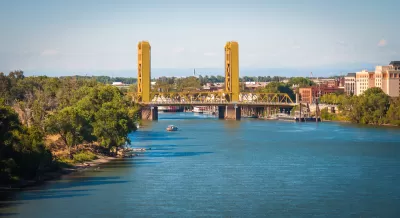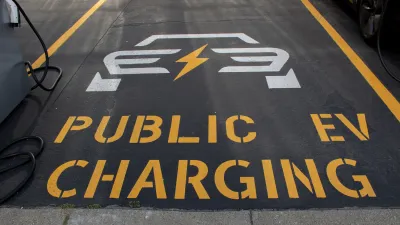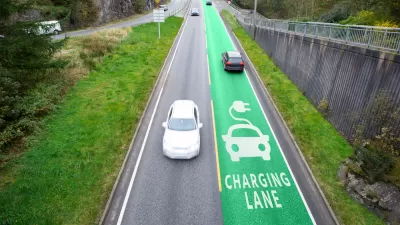Sacramento Mayor Darrell Steinberg hopes that an infusion of EV funds can jumpstart a new, clean economy in the city.

As part of Volkswagen's $800 million settlement, subsidiary Electrify America selected Sacramento to launch its "Green City" program—a $44 million initiative to increase electric vehicle use through a variety of programs, including infrastructure installation, outreach, and accessibility measures.
While the promise of an electric car-sharing service and low-cost mobility options are significant, Mayor Darrell Steinberg's vision for the program is much broader. In The Planning Report, he explains his hope that the investment will completely reshape Sacramento's industry and identity.
"We want to use this relationship with Electrify America to catalyze new industry in Sacramento around alternative fuels and electrification," he tells TPR. "Ultimately, I want Sacramento to become a center for the research and development of advanced transportation technologies and the rapid electrification of the automotive industry."
Already, he says, the Green City investment has sent "a major market signal," attracting electric vehicle manufacturers and charging companies to the city. Meanwhile, Sacramento is also working to attract tech companies from Silicon Valley and San Francisco, as part of efforts to build the "Northern California megaregion."
On one hand, Steinberg hopes to help California's capital city branch out of the government sector and build a robust private-sector economy. But as he pursues a high-tech economy, he also plans to use the city's close ties to the state Legislature to its advantage. As transportation technology advances past the limits of existing law, he says, Sacramento "can be the test site for innovations like autonomous vehicles—the laboratory that helps inform the state regulatory decisions around new technologies. Sacramento can draft templates for how the state might achieve that balance" between regulation and innovation.
FULL STORY: Sacramento Rebrands as Center of Alternative Fuel Research

Planetizen Federal Action Tracker
A weekly monitor of how Trump’s orders and actions are impacting planners and planning in America.

Maui's Vacation Rental Debate Turns Ugly
Verbal attacks, misinformation campaigns and fistfights plague a high-stakes debate to convert thousands of vacation rentals into long-term housing.

San Francisco Suspends Traffic Calming Amidst Record Deaths
Citing “a challenging fiscal landscape,” the city will cease the program on the heels of 42 traffic deaths, including 24 pedestrians.

Amtrak Rolls Out New Orleans to Alabama “Mardi Gras” Train
The new service will operate morning and evening departures between Mobile and New Orleans.

The Subversive Car-Free Guide to Trump's Great American Road Trip
Car-free ways to access Chicagoland’s best tourist attractions.

San Antonio and Austin are Fusing Into one Massive Megaregion
The region spanning the two central Texas cities is growing fast, posing challenges for local infrastructure and water supplies.
Urban Design for Planners 1: Software Tools
This six-course series explores essential urban design concepts using open source software and equips planners with the tools they need to participate fully in the urban design process.
Planning for Universal Design
Learn the tools for implementing Universal Design in planning regulations.
Heyer Gruel & Associates PA
JM Goldson LLC
Custer County Colorado
City of Camden Redevelopment Agency
City of Astoria
Transportation Research & Education Center (TREC) at Portland State University
Jefferson Parish Government
Camden Redevelopment Agency
City of Claremont





























